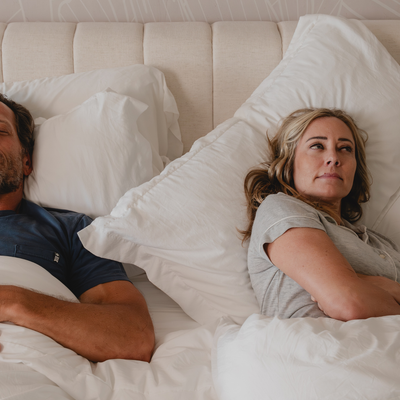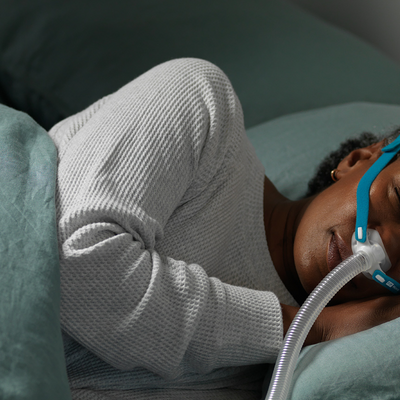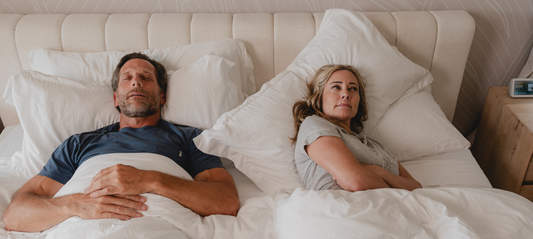
May 19, 2025
From workplace impact to health risks to emerging tech, we’re sharing the most surprising data points about sleep apnea you might not know. At Lofta, we understand that awareness is the first step toward better health. These statistics highlight why obstructive sleep apnea (OSA) is a growing concern and why sleep apnea testing and CPAP treatment can change lives.
1. 30 Million Americans Have by Sleep Apnea
An estimated 30 million adults in the U.S. have obstructive sleep apnea, according to the American Medical Association. This means millions are living with symptoms like daytime fatigue, mood swings, and increased health risks. Lofta’s at-home sleep apnea tests make it easier than ever to bridge that gap.
2. 80% of Moderate and Severe OSA Cases Are Undiagnosed
Sleep apnea often goes unnoticed because many people don’t recognize the warning signs, such as loud snoring or restless sleep. Unfortunately, untreated OSA can lead to serious complications, including heart disease and stroke. Early screening is super important.
3. Men Are 2 to 3 Times More Likely to Develop OSA
While both men and women can develop sleep apnea, studies show that men are at higher risk, especially between the ages of 30 and 50. However, post-menopausal women catch up quickly, making it important for women to stay alert to symptoms as they age.
4. CPAP Therapy Lowers Blood Pressure
Consistent use of CPAP therapy has been shown to reduce high blood pressure in patients with OSA. CPAP therapy not only improves sleep but also supports cardiovascular health.
5. OSA Increases Stroke Risk by Up to 3 Times
People with untreated sleep apnea have a two to threefold higher risk of experiencing a stroke. Interrupted breathing puts strain on the body’s circulatory system, increasing the chances of blood clots and other complications. CPAP therapy plays a key role in reducing these risks.
6. 50% of Type 2 Diabetics Have Sleep Apnea
OSA and Type 2 diabetes frequently go hand-in-hand, with studies showing about half of all diabetics also have sleep apnea. Poor sleep can worsen insulin resistance, making blood sugar management more difficult. Addressing sleep apnea may improve diabetic control and overall health.
7. OSA Raises the Risk of Heart Failure
Sleep apnea doesn’t just disrupt rest, it places significant strain on the heart. Repeated drops in oxygen levels can damage the heart muscle over time, contributing to heart failure and other cardiovascular diseases.
8. CPAP Reduces the Risk of Car Accidents
Daytime sleepiness caused by OSA is a leading factor in drowsy-driving crashes. CPAP therapy can dramatically reduce accident risk by restoring healthy, restorative sleep. Lofta clients, including commercial drivers, often report feeling more alert and safer behind the wheel while using CPAP.
9. Sleep Apnea Costs the U.S. $150 Billion Annually
The financial burden of untreated sleep apnea is staggering, including healthcare expenses, lost productivity, and accident-related costs. Investing in a streamlined sleep apnea solution can dramatically lower these unexpected costs.
10. Obesity Is the Strongest Risk Factor for OSA
About 60–90% of adults with OSA are overweight or obese. Excess weight around the neck and chest can restrict airflow during sleep. Lofta encourages patients to pair CPAP therapy with healthy lifestyle changes for maximum results.
11. Post-Menopausal Women Are at High Risk
Although OSA is less common in women, the risk rises significantly after menopause. Hormonal changes may play a role in airway stability during sleep, highlighting the importance of regular screening for women over 50.
12. CPAP Compliance Lowers Hospital Readmission Rates
Patients who stick with CPAP therapy after surgery or hospitalization have fewer complications and are less likely to be readmitted. Consistent therapy ensures better oxygenation and supports faster recovery.
13. OSA Is Linked to Higher Depression Rates
Mental health and sleep health are closely connected. Research shows that people with untreated sleep apnea are significantly more likely to experience depression and anxiety. CPAP therapy often improves mood and emotional well-being within weeks.
READ: How Sleep Apnea Affects Your Brain and Mental Health
14. CPAP Users Report Increase in Quality of Life Scores
Beyond health benefits, CPAP therapy can enhance everyday well-being. Many users report improvements in energy levels, concentration, and relationship satisfaction after starting CPAP.
15. 20% of Obese Children Have Sleep Apnea
OSA isn’t just an adult issue. Some children, especially those who are overweight, struggle with disrupted breathing during sleep. Untreated pediatric sleep apnea can impact growth, behavior, and academic performance.
16. CPAP Masks Are Now Designed for Maximum Comfort
Modern CPAP masks are lightweight, flexible, and engineered for minimal air leaks. At Lofta, we help clients find the right mask fit, increasing comfort and long-term adherence to therapy.
17. Wearable Devices Like Watches Are Improving OSA Detection
Thanks to advances in health tech, smartwatches and fitness trackers are increasingly able to notify users of potential sleep apnea events. While not a replacement for medical diagnosis, these tools can prompt earlier testing.
18. Untreated OSA Can Worsen GERD Symptoms
Gastroesophageal reflux disease (GERD) and sleep apnea often co-exist. CPAP therapy not only helps breathing but may also alleviate acid reflux by keeping the airway and the esophagus more stable during sleep.
19. Portable CPAP Machines Have Revolutionized Travel
Today’s compact CPAP devices make it easier than ever to maintain therapy while on the go. Lofta offers a range of travel-friendly CPAP options so patients never have to miss a night of treatment.
20. Lofta’s At-Home Testing Is Extremely Accurate
Our WatchPAT ONE device delivers reliable results without an overnight lab stay. Patients appreciate the convenience and quick turnaround, helping them start CPAP therapy sooner.
21. Telehealth Is Transforming Sleep Apnea Care
With Lofta’s RemoteRx service, patients can recieve their CPAP prescription entirely online. Telehealth bridges gaps in access, bringing sleep apnea solutions directly to your door.
22. OSA Affects 1 in 5 Adults Worldwide
Sleep apnea isn’t just a U.S. problem, it’s a global health challenge. As awareness grows, so does the need for accessible, affordable testing and treatment options like those offered by Lofta.
23. CPAP Lowers Healthcare Costs by Reducing ER Visits
By preventing serious complications, CPAP therapy reduces emergency room visits and hospitalizations. This not only improves individual outcomes but eases the strain on healthcare systems.
30. The Future of Sleep Apnea Care Is Virtual!
Home-based testing and telehealth will soon dominate the sleep apnea landscape. Lofta is proud to be a leader in the sleep health industry, helping patients nationwide access care from the comfort of home.
Take the First Step Toward Better Sleep
Sleep apnea is more common—and more serious—than many people realize. If you’ve been dealing with fatigue, snoring, or other unexplained symptoms, don’t wait. Lofta’s at-home sleep test makes it easy to get answers without leaving your bed.
👉 Order your at-home sleep test or explore our CPAP solutions today










































